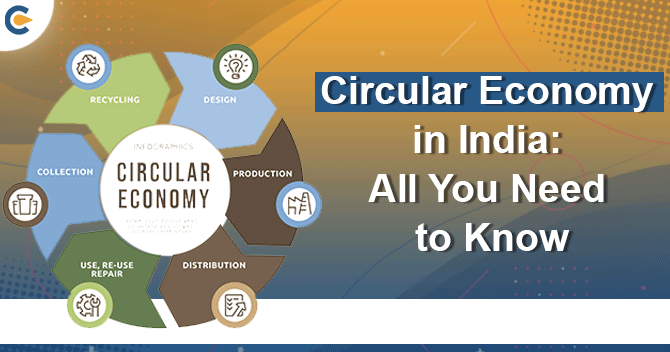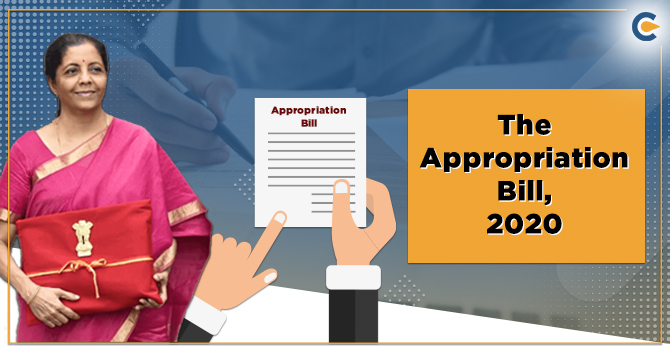A circular economy entails markets that facilitate incentives to reuse items instead of disposing of them and then extracting new resources. In a Circular economy, all types of waste, such as scrap metal, clothes, and expired electrical appliances are returned to the economy or used more wisely.
The notion of circular economy depends on practices, strategies, policies & technologies to achieve principles relating to recycling, reusing, redesigning, remanufacturing, recovering water and nutrients to protect natural resources from unwise treatment. It facilitates the necessary conditions to incentivize economic and social sectors to opt for strategies that ensure sustainability. But, the increasing intricacy of sustainability implies that conventional and management/economics may be unable to confront emerging challenges and come up with apt solutions.
Role of Circular economy in reversing the environmental crisis
- Circular economy sought to reuse material and effective utilization of expired products to minimize environmental impact. Apart from that, it encourages apt utilization of natural resources and extended service life of environmentally hazardous products such as plastic, electronic appliances, etc.
- The scope of Circular economy is not only confined to reversing environmental crisis; it also seeks to create job opportunities across key sectors, thereby imparting more value to the economy.
- There is concern among the OEMs and manufacturers that adopting a Circular economy may lead to compromised ROI. However, that is not the case as the government strives to help companies with tax incentives promote a circular economy.
- Since the Circular economy revolves around the notion of expired recycling products, it held manufacturers accountable for accumulating waste generated by their products.
- In India, MoEFCC, i.e. Ministry of Environment, Forest and Climate Change, plays a pivotal role in promoting circular economy across all key sectors. Given this, a regulatory authority like CPCB has mandated waste-prone industries (plastic and electronic manufacturer in particular) to secure the EPR authorization.
- EPR authorization holders are needed to develop an EPR plan under which specific targets have been laid out by the authority to procure waste generated by their products. Apart from that, they also must comply with several other guidelines to ensure effective treatment of such wastes to reduce environmental damage. Thus, it can be said that EPR authorization is a giant leap toward a circular economy in India.
Why are businesses reluctant to adopt a circular economy in India?
Following are the reasons that are preventing businesses from entirely relying on circular economy in India.
- Bland policies and unclear vision
- Supply chain limitations
- Lack of clear pricing signal
- Access to capital
- Physical limitation
- Thresholds in technologies and infrastructure capacity
- Lack of target and benchmark
- Lack of expertise
- Negative customer perceptions of remanufactured products
- High cost, low ROI
- lack of standards for refurbished products
- Incentives to invest
- Competing priorities
- Weak incentives
- Lack of internalization of external costs
- Lack of public information to support participation in reuse / recycle / remanufacturing
- Complex recycling process
- Issues in probing product quality throughout its service life
- Maintaining product quality with remanufactured materials.
- Issues in tracking material composition of products before initiating recycling process
Potential Barriers to Circular Economy/ Resource Efficiency
- Lack of awareness has restrained end-users from making resource-efficient choices.
- Some resource efficacy gains can be attained by improving synergies and syncing materials and supply chains between various actors- but pre-existing habits and absence of co-ordination can hamper the identification of such opportunities
- Effective waste treatment and remanufacturing is a costly affair for the industries because it seeks an entirely new setup of equipment and other resources. Thus, such downsides may slow down their effort in this context and compel them to prioritize other focus areas. This may significantly affect the growth prospect for those already experiencing a financial crisis.
- Sticking to a circular economy may benefit the companies in longer terms. Still, there is no clarity on how it will work out in future considering the dynamism of the current economic structures. This ambiguity may prevent companies from making the required investment needed for remanufacturing, recycling, and systematic waste processing.
- Although CE practice may facilitate economic benefits by saving material costs, benefits may not be evenly distributed. Sectors or nations dependent on the extractive companies would stand to lose, as would entities needed to make efficiency investments from which they are saved in the status quo, owing to split incentives. Such entities may thus slow down the transition, building another barrier which shall also need to be negotiated.
- Companies could spend cost savings via CE measures on energy-intensive products, ultimately negating the energy efficiency savings.
How can a circular economy help India reverse the environmental crisis?
- Our country desperately needs a development model that ensures optimum utilization of resources. With an ever-rising population, swift urbanization, environmental pollution and climate change, India must speed up its effort to adopt a circular economy.
- Circular economy facilitates a new principle that emphasizes the requirement to take an extensive view of processes and products.
- Our production systems must opt for practices that revolve around the circular economy notion to minimize resource dependency and gain a competitive edge.
- A circular economy path opted by our nation could bring in substantial annual benefits. In addition to that, it can ensure a significant reduction in congestion as well as pollution, which would eventually have a snowball effect on the economy.
- Our ability to improve our resource efficacy, reduce the consumption of prevailing resources and the advent of new business models will incentivize our transition towards self-reliance.
- The Government of India has been proactively figuring out policies and incentivizing projects to drive the nation towards a circular economy. Following rules have been notified in this direction to achieve sustainable economic growth;
- Plastic Waste Management Rules
- e-Waste Management Rules
- Construction and Demolition Waste Management Rules
- Metals Recycling Policy
- The government has formed 11 committees managed by the respective line ministries to speed up the transition from a linear economy to a circular economy. It comprises personals from NITI Aayog and MoEFCC, SMEs and industry representatives- for eleven focus areas (Annexure 1).
- The committees shall underpin extensive action plans from transitioning from a linear to a sustainable economy in their concerned focus areas. They will also take necessary measures to ensure the efficient implementation of their recommendations and findings.
- The focus areas entail 11 end-of-life recyclable materials/wastes/products that either keep posing significant challenges or are emerging as new areas that should be addressed holistically. While increased production and an ever-changing consumption pattern will create more jobs and escalate per capita income, the effects of such an increased production rate on the environment must also be seamlessly managed and obliterated.
- With only two per cent of the global landmass and four per cent of potable water resources, a linear economy model ‘Take-Make-Dispose’ would hamper India’s manufacturing regime, and consequently, the whole economy. Thus, it is vital to acknowledge and revolutionize the supply chain in the manufacturing process and swiftly move toward a circular economy, which facilitates multipronged economic and environmental benefits.
Conclusion
Sustainable development seeks disruptive transformations in the way our businesses and societies are organized. The circular economy model facilitates an opportunity for innovation and synchronization between natural ecosystems[1], businesses, our lifestyle, and waste management. Though the circular economy in our nation is at a nascent phase yet, most industries have stepped forward to expedite their effort in adopting the same. This is helping the government to create Social Innovation in the way we reuse and recycle our precious resources.
Read our Article:CPCB Suspends the Registration Process for PIBOs for three months











